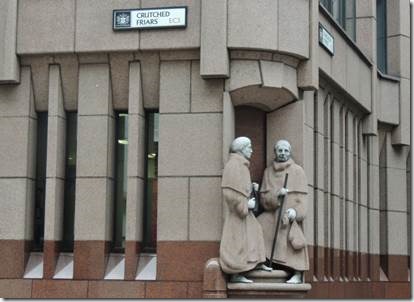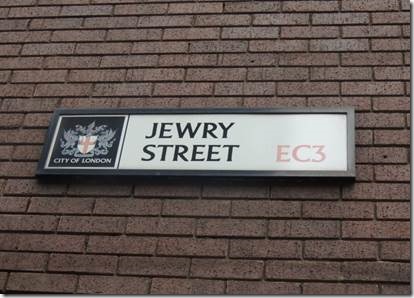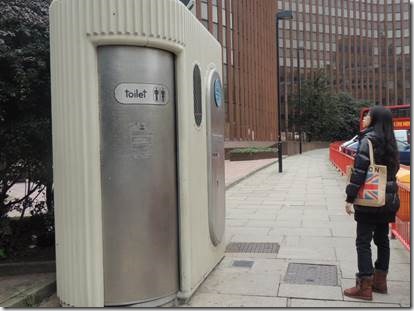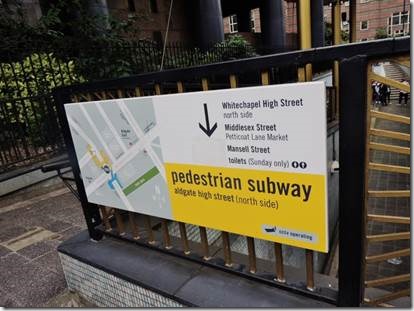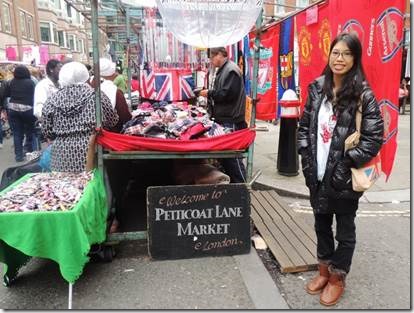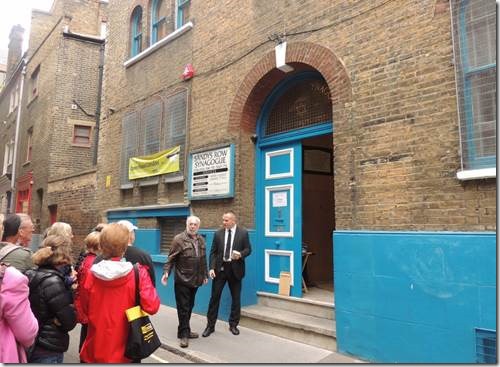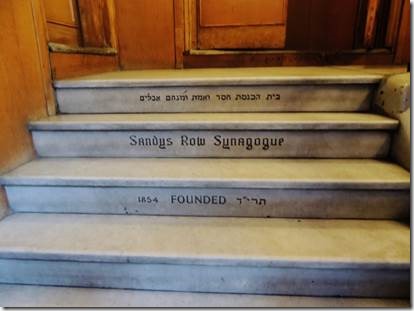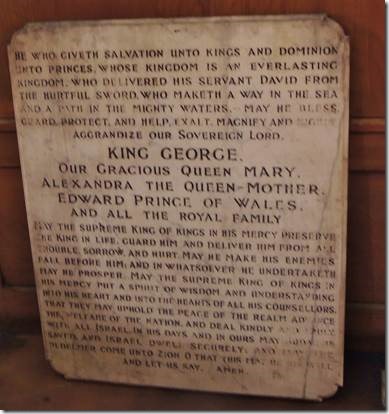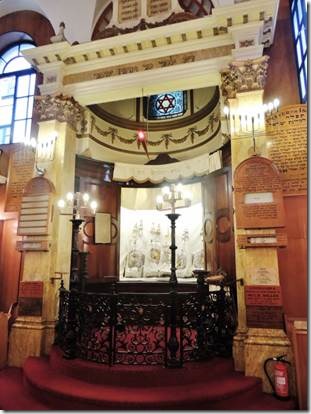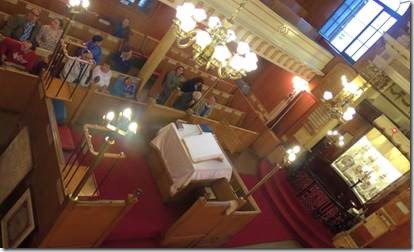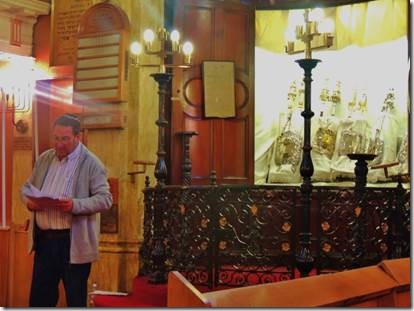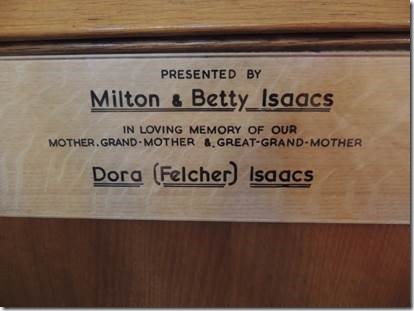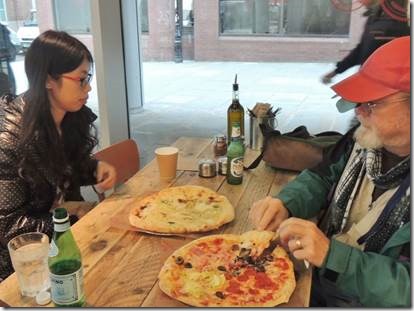Cheers,
Today we visited the Tower of London. And thanks to my Towers Hamlets library card I only had to pay £1 for my ticket. My long walk to Canary Wharf to get the card is another whole story with lots of photos for another time. It took me through the town of Wapping which I want to visit more before I write about it. Anyway, as the Tower of London is in Tower Hamlets and they want to promote library use (my guess) a £19 senior ticket could be had for £1 with your card.
Tomorrow we’ll leave early for a very busy two days in Birmingham helping Singkey get situated at the University. We’re planning to stay one night but will perhaps stay for 2 depending. It will be our first Brit Rail train ride. We have to leave here on the tube and will switch for Brit Rail in Euston Station at exactly 9:20.
Busy busy busy! We’ve had a lovely visit with Singkey and look forward to her stay with us over the mid-December break.
When we’re home in October we can watch the Red Sox in the play-offs! Go Sox!!
Ru
Crutched Friars
Petticoat Lane Sunday Market
Sandys Row Synagogue http://www.sandysrow.org.uk/
|
I couldn’t pass up the chance to find out about these guys…I thought the friars all used some kind of crutch. True, but not the kind of crutch I was thinking.
Crutched Friars (Or Crossed Friars). “An order of mendicant friars who went to England in the thirteenth century from Italy, where they existed for some time, and where they were called "Fratres Cruciferi" (see below). There first appearance in England was at a synod of the Diocese of Rochester in 1244, when they presented documents from the pope and asked to be allowed to settle in the country (Matthew Paris). Each friar carried in his hand a wooden staff surmounted by a cross and also had a cross of red cloth upon his habit, from which circumstances originated the name by which they became commonly known. Their rule was that of St. Augustine and their habit originally brown or black, was later on changed to blue by Pope Pius II. They established eight or nine houses in England, the first being at either Colchester (according to Dugdale), or at Reigate (according to Reyner), founded in 1245.They settled in London in 1249, where they gave their name to the locality, near Tower Hill, still called "Crutched Friars". Other houses were at Oxford (1348), York, Great Weltham (Suffolk), Barham (a cell to Gt. Weltham), Wotten-under-Edge (Gloucestershire), Brackley (Northants) and Kildale (Yorkshire). http://www.newadvent.org/cathen/04557a.htm
History of 42 Crutched Friars Crutched Friars were officially known as The Canons Regular of the Order of the Holy Cross, referred to as Friars of England, which is a reflection of the name they consistently gave themselves: Fratres Sanctae Crucis. The Brethren of the Holy Cross There were never more than 40 members at any one time, and indeed in over 300 years of their existence the number was less than 750 men of which only 150 have been identified. Historians have treated them as one of the “dim little Orders” and to speak of them as an exiguous and undistinguished body. In 1246 the Order of Crutched Friars was given 6⅟2 acres of land in order to build a monastery near Lincoln. It was not until 1247 that the Order of St. Mary of Bethlehem founded a hospital in London, which became the famous asylum known as Bedlam. On 18th May 1269 King Henry III gave permission for the Order to build an oratory in London. This was conditional upon the Friars getting money from the Bailiffs of London whom the King had ordered to produce it “some time ago”. In 1270 the King gave Six Oaks “suitable for building” and the building of the monastery near the Tower of London just south of Lloyds Club, was completed. The monastery remained until the Great Fire of London in 1666 when it was destroyed. Prior to that time in 1616 the Ambassador of France built his official residence there. At that time Ambassadors were at the Court of King James at the Tower of London (they later moved to St. James’ Palace). Members will notice that French Ordinary Court is a small street underneath Lloyds Club. This is called French Ordinary Court because the Huguenots were allowed by the French Ambassador to sell coffee and pastries. They were very successful insofar as a “French Ordinary” was as well known then as a bistro is today. In the 18th century the house ceased to be the Ambassador’s residence and ever since has been used as a club, small apartment block or offices. In 2009 the property was refurbished for use by Lloyds Club. http://www.lloydsclub.co.uk/History-of-42-Crutched-Friars.asp
On my map Crutched Friars Street curves around and becomes Jewry Street.
|
|
“The first published mention of a Jewish quarter in London was in 1128, although their presence has been felt at least from the time of the Norman Conquest in 1066. Jewry Street in London’s financial center was where Jews settled both before their expulsion in 1290 and after the resettlement, 350 years later. From the late 1800s to just before WWII, thousands of Jews from Poland, Romania and Russia arrived in England, many crowding into the two square miles of Whitechapel and Stepney, close to where their ships had docked.” http://www.timetravel-britain.com/articles/london/jewish.shtml |
|
Singkey looking investigating this “toilet structure.” We first encountered these in Amsterdam. No religious significance at all.
|
|
Sign for Middlesex Street; what was once, before the embarrassed Victorians changed the name, Petticoat Lane.
|
|
Petticoat Lane Market “Petticoat Lane has a long history as a neighborhood of immigrants. In early Stuart times (early 1600’s) Spanish representatives to the Court of King James maintained their residence here at London’s newest high fashion district. When the Great (Bubonic) Plague epidemic of 1665 killed at least one-third of London’s population, and the Great Fire destroyed most of London’s buildings just one year later (1666), Petticoat Lane underwent a transformation. Within thirty years The City was rebuilt by Christopher Wren and his construction army into a sanitary, modern commercial and residential center. East London, decimated by plague, but not by fire, was no longer a fashionable "country" neighborhood, but a down-in-the-mouth district for the lower classes. From Europe came refugees from religious persecution—including many Huguenots and Jews with traditions within the weaving and clothing trades—who found cheap housing and relevant employment in Whitechapel, and especially in Petticoat Lane. Within 100 years, Petticoat Lane had once again become a fashionable clothing market for residents of The City, many of whom shopped on the only day of the week they had free: Sunday. In the 19th century, Victorian morés regarded the popular Sunday market on a street named after a lady’s undergarment with more than raised eyebrows. In 1830 Petticoat Lane was renamed Middlesex Street and attempts were made to end the market’s long tradition of Sunday operation. During this time the neighborhood was dirty, dark, and dangerous, with plenty of vice and street crime. Whitechapel, which was home to Karl Marx (1849-83) and the bell foundry that produced both the Liberty Bell and Big Ben, remains best known for the mysterious 1888 slasher of prostitutes known everywhere as Jack the Ripper, known to have prowled the alleys of Petticoat Lane Market. But the market’s popularity never waned, and in 1936 Parliament acted to officially protect the market as a London institution. Petticoat Lane today; bargains and quality are found there, but be prepared to hunt for quality goods and haggle for bargains. Evolution continues around Petticoat Lane. The City of London and, especially, the East End, which took the brunt of heavy bombing by the Nazi Blitz, have undergone a renaissance since the 1980’s. Although still home to large under classes of Asians and Cockneys, East London has been discovered by well-paid young professionals who work across The Wall in the City. Docklands neighborhoods like St. Katharine’s Marina have become gentrified, and even Petticoat Lane’s old competitor market, Brick Lane, has become a fashionable residential address connecting two former rundown neighborhoods, Whitechapel and Shoreditch. Remarkably, however, and perhaps due to its parliamentary protection, The Lane (as East Enders still call the market) remains very much the quintessential London street market which no one departs either empty-handed or hungry. http://www.homeatfirst.com/petticoa.htm Sites with interviews of former Petticoat Lane stall keepers.. http://spitalfieldslife.com/2011/02/13/petticoat-lane-market-1/ http://spitalfieldslife.com/2011/06/05/petticoat-lane-market-2/ “Petticoat Lane is London’s world famous Sunday market and sells mainly clothes for men, women and children, from street-cred club wear to over-orders of designer goods and last year’s must-haves. One of its specialities is leather wear at the Aldgate East end and there’s bric-a-brac, household goods, in fact everything you could possibly think of plus some other bits and bobs too. The market is held in and around Middlesex Street on Sundays from 9am to 3pm, with a smaller market open on Wentworth Street from Monday to Friday. Confusingly, Petticoat Lane doesn’t actually exist any more – we have the Victorians’ prudishness to thank for that, wishing to avoid any reference to undergarments they changed the name to Middlesex Street in 1846. With more than 1,000 stalls lining the streets on a Sunday bargain hunters come in their droves, it’s a great scene worth the trip even if you’re not shopping. Nearby areas of interest include Brushfield Street where Spitalfields Market is held and which offers more in the way of quality. Petticoat Lane may be London’s biggest street jumble sale but for bargain hunting, with a bit of haggling thrown in, it’s the original and the best. “http://www.londontown.com/ |
|
Singkey at Petticoat Lane Market Bargain hunters could have found prizes but we were quickly done and on our way; Singkey came from China with “at the weight limit” suitcases and I’m gathering stuff around the boat for Oxfam. We all need to subtract rather than to add. |
|
Sandys Row Synagogue… Having finished with the market much sooner than we’d planned we were sort of at loose ends. So when a woman asked me if I knew where Sandys Row was as the synagogue there was having an open house, we helped her find it and took part in the tour. The East End was the “Jewish part” of London where stories of Jewish life is threaded throughout the area. The tour/talk was short but interesting. There was humor, suspense, and what seems to be a happy ending for this working class synagogue that survived the blitz and more recently the Historic Monuments committee’s, very expensive edict, to replace the roof. |
|
“Many of the boxes stacked among broken furniture and old electrical fittings in the dusty cellar of Sandys Row Synagogue in Spitalfields, the last still in daily use in what was once the heart of the Jewish East End, turned out to be rather disappointing. However, one unpromising box did hide a real treasure: a superb purple velvet cloth embroidered in silk and gold wire, paid for by the women of the community to celebrate the last Diamond Jubilee, of Queen Victoria in 1897. "This would have cost a fortune, hundreds of pounds, and it was a magnificent achievement for the women of our synagogue," said Jeremy Freedman, one of the descendants of the founding fathers of the synagogue. "This was never a wealthy community: these women were market traders in Petticoat Lane, people came to the synagogue on alternate days – one would come here and the other would mind both stalls, the next day they’d change places. How they found the money for this I cannot imagine." The synagogue is so hidden away in a narrow lane that even people working a few streets away are unaware of its existence. It was built in 1766 as a Huguenot church, then a chapel, but it had become a lockup store when the founders first rented it in 1854. They then bought the freehold and ingeniously adapted the building to align it towards Jerusalem while retaining a remarkable amount of the Georgian interior. A £400,000 restoration of the roof and interior was recently completed with major grants from English Heritage for the Grade II-listed building, after the discovery that bomb damage from the Blitz had shifted the roof timbers so that they were resting only on decaying plaster. Sandys Row Synagogue, which is listed as Grade II historic monument, is deemed the most important site in Britain, still in use, with a direct link to the mass immigration of Jews in the 19th century. It is one of the few synagogues still active in the East End, once the epicenter of Ashkenazi Jewish life in London. http://samgrubersjewishartmonuments.blogspot.co.uk/ |
|
Synagogue security: the man in the tie is part of the ever-present synagogue security. Both Randal and I thought he reminded us of the newest James Bond Daniel Craig As we were leaving a tour group was coming in. |
|
1854 |
|
Prayer for the Royal Family, it’s history a total surprise to me. In 1990, when Princess Margaret was attending a special service at the Maidenhead synagogue, she was astonished to hear a prayer for the good health and wise counsel of the Queen. When told that the prayer was not a one-off but recited every Sabbath in every synagogue in Britain, she remarked: "How lovely, they don’t do that for us in church; I’ll tell my sister." The sentiments of the Jewish prayer for the Monarch and the Royal Family, can be traced as far back as the prophet Jeremiah’s advice to the exiled Jews in Babylonia over 2,500 years ago: "Seek the peace of the city in which you live … for in its peace is your peace" (Jeremiah 29:7). A formalised prayer dates back to at least the 14th century and its recitation gradually became a custom among communities across the diaspora. The prayer is an opportunity to proclaim loyalty to adopted homes, as well as a plea for rulers to treat Jewish communities kindly. http://www.jewishmuseum.org.uk/ In fact, to this day, a prayer for the welfare of the Royal Family is recited every Sabbath morning at a pivotal moment in the prayer service, just after the Reading of the Torah and before Musaf, the additional service for the Sabbath. The rabbinate has also initiated special prayers for the monarch at significant life-cycle events including births, deaths, coronations, and at times of ill health or during a war. While other Jewish communities, particularly in Germany and the Netherlands, have written prayers for their respective monarchies, no other community has been as prolific as Anglo-Jewry. |
|
The Ark with the Torah Jews traditionally pray facing Jerusalem necessitating the original entrance to be moved and this alcove to be built in its place. |
|
Photo from the “women’s gallery.” Sandys Row is “moderately Orthodox” so the men and women sit separately. This former church had the balcony in place, one reason why it was bought by the congregation to be used as their synagogue. |
|
Our tour leader said his parents couldn’t wait to “move up” from East London and now his kids can’t afford to move back. |
|
My seat in the synagogue, most had plaques such as this. And then it was time for lunch! |
|
Randal ordered the meat and artichoke (I told him he wouldn’t like the artichoke, he didn’t listen, ordered it and he didn’t eat but Singkey did.) I chose the cheese, garlic and rosemary very thin crust pizza and everyone liked that! After all that pizza we needed a walk so set off again…. discovering an open house tour at Toynbee Hall. It was open house weekend in London. But more about Toynbee Hall and London Open House next email |

